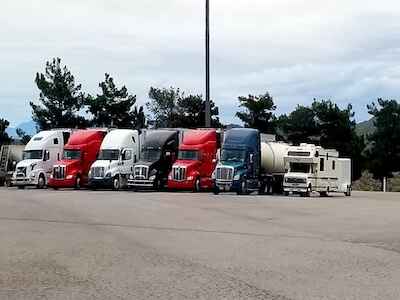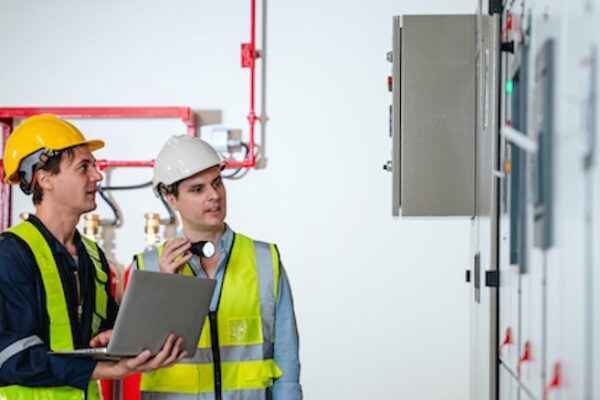International Climate Webinar Series Second Hybrid Workshop on US Clean Mobility by 2035
ICWS PARTNERS

International Association of Transportation Regulators
ICWS SIGNATURE SPONSOR


ICWS SPONSORS


ICWS Hybrid Workshop on US Clean Mobility by 2035 aims to provide a platform for sharing and networking information about the transportation industry's transformation towards sustainable and clean mobility solutions by 2035. The workshop will facilitate discussions among stakeholders directly or indirectly involved in this transition over the next decade.
FIRST SESSION



Clean mobility solutions in the United States densely populated urban areas
Recent statistics indicate a steady increase in adopting eco-friendly transportation in the United States, especially in the medium- and heavy-duty vehicle sectors. More and more cities and companies are opting for electric fleets, and transit buses, trucks, and school buses are being electrified at a growing rate. In 2019, sales of electric transit buses increased by 37%, while electric truck sales increased by 23%. Moreover, the number of public electric vehicle charging stations in the US has grown from a few thousand in 2011 to over 78,000 in 2020. These figures demonstrate that the country is shifting towards more sustainable and environmentally friendly transportation options.

MHDVs & EVS CHARGING INFRASTRUCTURE

UTILITIES AND THE POWER GRID: MHDV ELECTRIFICATION IMPACT
SECOND SESSION



The Private-Public Partnership Role in the Electrification of the United States.
Efforts are being made in the United States to electrify transportation, particularly for electric MHDVs. Initiatives such as the ChargeX Consortium and the EPA’s campaign for cleaner school buses are underway. By 2035, building energy efficiency and IoT technology will be integrated with cleaner transportation. It is crucial to have public-private partnerships to implement these initiatives successfully. The Department of Energy plans to provide up to $7 billion for low-carbon hydrogen hubs. The government is investing in IoT solutions to reduce energy consumption and increase efficiency in intelligent buildings, with the assistance of funding and partnerships with the private sector. According to the US Department of Energy, intelligent buildings have the potential to reduce energy consumption by up to 30%.

SUSTAINABLE TRANSPORTATION ACCELERATION THROUGH SMART BUILDING INTEGRATION

HOW IoT TECHNOLOGY CAN HELP ACHIEVE CLEAN TRANSPORTATION GOALS
KEYNOTE SPEAKER & MODERATOR
ICWS HOST

Matthew W. Daus, Esq. currently serves as Transportation Technology Chair at the City University of New York’s (CUNY) Transportation Research Center of The City College of New York, where he conducts research and continues to be extensively published as an expert on ground transportation regulation and technology. As a CUNY Distinguished Lecturer from 2010-2018, he taught courses on transportation history, policy, sustainability, for-hire regulation, and technology. Mr. Daus also continues to serve, since 2009, as President of the International Association of Transportation Regulators (IATR), a non-profit educational peer group of government transportation regulators from around the world promoting best regulatory and innovative practices. Mr. Daus is the longest-serving Commissioner/Chair/CEO of the New York City Taxi and Limousine Commission (TLC), where he served from 2001-2010. Before his tenure as Commissioner, Mr. Daus served in many other executive and counsel positions in the NYC government for almost 20 years, including: General Counsel to TLC and NYC Community Development Agency; Special Counsel to TLC and NYC Trade Waste Commission; NYC Human Rights Prosecutor; and Commissioner of NYC Civil Service Commission. Mr. Daus is a partner at Windels Marx Lane & Mittendorf, LLP, where he founded/chairs the Transportation Practice Group in 2010.
MATTHEW W. DAUS
PRESIDENT OF INTERNATIONAL ASSOCIATION OF TRANSPORTATION REGULATORS
Matthew W. Daus, Esq. currently serves as Transportation Technology Chair at the City University of New York’s (CUNY) Transportation Research Center of The City College of New York, where he conducts research and continues to be extensively published as an expert on ground transportation regulation and technology. As a CUNY Distinguished Lecturer from 2010-2018, he taught courses on transportation history, policy, sustainability, for-hire regulation, and technology. Mr. Daus also continues to serve, since 2009, as President of the International Association of Transportation Regulators (IATR), a non-profit educational peer group of government transportation regulators from around the world promoting best regulatory and innovative practices. Mr. Daus is the longest-serving Commissioner/Chair/CEO of the New York City Taxi and Limousine Commission (TLC), where he served from 2001-2010. Before his tenure as Commissioner, Mr. Daus served in many other executive and counsel positions in the NYC government for almost 20 years, including: General Counsel to TLC and NYC Community Development Agency; Special Counsel to TLC and NYC Trade Waste Commission; NYC Human Rights Prosecutor; and Commissioner of NYC Civil Service Commission. Mr. Daus is a partner at Windels Marx Lane & Mittendorf, LLP, where he founded/chairs the Transportation Practice Group in 2010.

Salima H. Steven holds an agronomy and crop science diploma and is a trilingual event producer, marketer, and communicator with twenty years of experience. Over 50 global events focusing on energy, environment, water, smart cities, and climate change have been organized and produced from small to large in North Africa, Europe, and the Middle East. Additionally, Salima has over seven years of experience managing communication for a non-profit association of very large power grid operators (GO15).
Salima Hebbache Steven
EventOne Founder & ICWS Commissioner
Salima H. Steven holds an agronomy and crop science diploma and is a trilingual event producer, marketer, and communicator with twenty years of experience. Over 50 global events focusing on energy, environment, water, smart cities, and climate change have been organized and produced from small to large in North Africa, Europe, and the Middle East. Additionally, Salima has over seven years of experience managing communication for a non-profit association of very large power grid operators (GO15).
KEYNOTE SPEAKERS

Antoine Maurice Thompson is a native of Buffalo, New York. He graduated from Buffalo Public Schools #61, #60, and Bennett High School. A graduate of SUNY Brockport with a dual bachelors’ degree in History and African and Afro-American Studies, Thompson also studied at the University of Ghana in Ghana, West Africa. Antoine is the recipient of an Honorary Doctor of Laws Degree from Medaille College. He is a graduate of the 2001 Class of Leadership Buffalo. Antoine M. Thompson is a nationally recognized leader for environmental justice, green business, housing, diversity, and urban policy. Antoine is the Executive Director of the Greater Washington Region Clean Cities Coalition (GWRCC), a public-private partnership that promotes the use of clean, American transportation fuels for homeland security, improved air quality, environment justice, diversity, and inclusion. He is the former Executive Director of the National Association of Real Estate Brokers (NAREB) the oldest organization of African American real estate professionals in the United States. Antoine led efforts to increase advocacy on Capitol Hill on closing the racial wealth gap through increasing the rate of Black homeownership. He had a significant public service career in his hometown of Buffalo, New York. His positions have included election to Buffalo Common Council where he authored the Buffalo’s Fair Housing Law, the Minority and Women Business Enterprise Inclusion Law and secured over $75 million for community development projects. He was elected to the New York State Senate in 2006 and 2008 and served as the Senate Deputy Majority Whip and the first African American to Chair the Senate Standing Committee on Environmental Conservation and Co-Chair of the Senate Minority and Woman Business Enterprise Task Force. He authored the NYS MWBE Mentor/Protégé Law. He was key architect of the Green Jobs/Green New York law.
Antoine M. Thompson
Executive Director of Great Washington Region Clean Cities Coalition
Antoine Maurice Thompson is a native of Buffalo, New York. He graduated from Buffalo Public Schools #61, #60, and Bennett High School. A graduate of SUNY Brockport with a dual bachelors’ degree in History and African and Afro-American Studies, Thompson also studied at the University of Ghana in Ghana, West Africa. Antoine is the recipient of an Honorary Doctor of Laws Degree from Medaille College. He is a graduate of the 2001 Class of Leadership Buffalo. Antoine M. Thompson is a nationally recognized leader for environmental justice, green business, housing, diversity, and urban policy. Antoine is the Executive Director of the Greater Washington Region Clean Cities Coalition (GWRCC), a public-private partnership that promotes the use of clean, American transportation fuels for homeland security, improved air quality, environment justice, diversity, and inclusion. He is the former Executive Director of the National Association of Real Estate Brokers (NAREB) the oldest organization of African American real estate professionals in the United States. Antoine led efforts to increase advocacy on Capitol Hill on closing the racial wealth gap through increasing the rate of Black homeownership. He had a significant public service career in his hometown of Buffalo, New York. His positions have included election to Buffalo Common Council where he authored the Buffalo’s Fair Housing Law, the Minority and Women Business Enterprise Inclusion Law and secured over $75 million for community development projects. He was elected to the New York State Senate in 2006 and 2008 and served as the Senate Deputy Majority Whip and the first African American to Chair the Senate Standing Committee on Environmental Conservation and Co-Chair of the Senate Minority and Woman Business Enterprise Task Force. He authored the NYS MWBE Mentor/Protégé Law. He was key architect of the Green Jobs/Green New York law.

William is a nationally recognized leader in energy policy, grid modernization and climate change. In 2015, he was first recognized by Association of Energy Service Professionals (AESP) as the “One to Watch” for his contribution related to energy efficiency and sustainability. William was awarded Modern Day Technology Leader at the 2017 Black Engineer of the Year Awards. As recent as 2021, William was recognized by Environment + Energy as the Nation’s Top 100 Leaders, for his work related to decarbonization and electrification transportation. In his current role as Director of Governmental and External Affairs, William is responsible for engaging in stakeholder relations with state and local officials, community leaders and businesses, consumer and nonprofit organizations within the Pepco Maryland region. Advocating, shaping policy and managing issues to deliver value to our customers and key stakeholders. In 2020, William was appointed to the Prince George’s County Climate Action Commission. He was instrumental in the County’s plan to reduce GHG emissions by 50% by 2030 and achieve carbon neutrality by 2050. His previous role as Senior Portfolio Manager of Energy Efficiency, William was responsible for developing and implementing the strategic vision for increasing Demand Side Management programs across Atlantic City Electric, Delmarva Power and Pepco for over two million customers. Work included increasing adoption of behind the meter technology and programs to help customers better manage their energy usage, while leveraging these assets to maximize grid utilization. William has been with Exelon for over two decades, leading numerous engineering and customer organizations across the company. He was a member of Pepco Holdings’ first Engineering Intern class in 2001. William is enthusiastic in the fight for climate justice and racial equity and is a member of Pepco’s/Exelon’s Racial Equity Taskforce. Civic Involvement William Ellis is a 5th generation Washingtonian and a past Elected Official in Washington D.C. serving in the capacity as an Advisory Neighborhood Commissioner. William currently sits on the boards for Montgomery County Chamber of Commerce, Leadership Montgomery and Northeast Energy Efficiency Partnerships. He has held previous board positions at Clean Air Partners (Chair), Alumni Governors of Catholic University of America and Association of Energy Service Professionals (Treasurer). He is also a current member of the Maryland Clean Energy Center Board Advisory Council. Education and Professional Licenses William Ellis is a graduate of The Catholic University of America, where he attained a bachelor’s degree in Electrical Engineering, a master’s degree in Engineering Management and a master’s degree in Electrical Engineering. William is also a University of Idaho Utility Executive alumnus and has a Global Executive MBA from Georgetown University. William is also a certified Project Management Profession (PMP). William is currently a Climate Justice Fellow at the University of Maryland, School of Applied Environmental Health.
William R. Ellis
Director of Governmental and External Affairs - Pepco, An Exelon Company
William is a nationally recognized leader in energy policy, grid modernization and climate change. In 2015, he was first recognized by Association of Energy Service Professionals (AESP) as the “One to Watch” for his contribution related to energy efficiency and sustainability. William was awarded Modern Day Technology Leader at the 2017 Black Engineer of the Year Awards. As recent as 2021, William was recognized by Environment + Energy as the Nation’s Top 100 Leaders, for his work related to decarbonization and electrification transportation. In his current role as Director of Governmental and External Affairs, William is responsible for engaging in stakeholder relations with state and local officials, community leaders and businesses, consumer and nonprofit organizations within the Pepco Maryland region. Advocating, shaping policy and managing issues to deliver value to our customers and key stakeholders. In 2020, William was appointed to the Prince George’s County Climate Action Commission. He was instrumental in the County’s plan to reduce GHG emissions by 50% by 2030 and achieve carbon neutrality by 2050. His previous role as Senior Portfolio Manager of Energy Efficiency, William was responsible for developing and implementing the strategic vision for increasing Demand Side Management programs across Atlantic City Electric, Delmarva Power and Pepco for over two million customers. Work included increasing adoption of behind the meter technology and programs to help customers better manage their energy usage, while leveraging these assets to maximize grid utilization. William has been with Exelon for over two decades, leading numerous engineering and customer organizations across the company. He was a member of Pepco Holdings’ first Engineering Intern class in 2001. William is enthusiastic in the fight for climate justice and racial equity and is a member of Pepco’s/Exelon’s Racial Equity Taskforce. Civic Involvement William Ellis is a 5th generation Washingtonian and a past Elected Official in Washington D.C. serving in the capacity as an Advisory Neighborhood Commissioner. William currently sits on the boards for Montgomery County Chamber of Commerce, Leadership Montgomery and Northeast Energy Efficiency Partnerships. He has held previous board positions at Clean Air Partners (Chair), Alumni Governors of Catholic University of America and Association of Energy Service Professionals (Treasurer). He is also a current member of the Maryland Clean Energy Center Board Advisory Council. Education and Professional Licenses William Ellis is a graduate of The Catholic University of America, where he attained a bachelor’s degree in Electrical Engineering, a master’s degree in Engineering Management and a master’s degree in Electrical Engineering. William is also a University of Idaho Utility Executive alumnus and has a Global Executive MBA from Georgetown University. William is also a certified Project Management Profession (PMP). William is currently a Climate Justice Fellow at the University of Maryland, School of Applied Environmental Health.
FEATURED SPEAKERS

Paul serves as Director of Public Affairs and Federal Communications for Clean Fuels Alliance America. Paul brings to Clean Fuels Alliance America extensive experience in media relations and advocacy on federal fuel policies. Paul earned a bachelor’s degree in political science and international relations at UCLA and a master’s degree in political science and international relations at the University of California, Davis.
paul winters
Director, Public Affairs and Federal Communications Clean Fuels Alliance America
Paul serves as Director of Public Affairs and Federal Communications for Clean Fuels Alliance America. Paul brings to Clean Fuels Alliance America extensive experience in media relations and advocacy on federal fuel policies. Paul earned a bachelor’s degree in political science and international relations at UCLA and a master’s degree in political science and international relations at the University of California, Davis.

Alain Steven is an internationally recognized expert in the Electric Power industry with over 54 years of experience. He has held various C-level executive positions, including CEO and CTO, with multinational companies and utilities. Alain's expertise lies in real-time mission-critical systems for demand side management, energy markets, grid management, microgrids, nuclear and fossil power plant simulators, and plant computers. He is also the primary author and inventor of 7 patents in the field of advanced demand response in electricity markets. At Energy One, the startup he founded and led as CEO, they have developed innovative technologies and financial solutions to support the decarbonization of power grids, transportation, and buildings.
Alain p. steven
Founder & CEO of energy one solutions international
Alain Steven is an internationally recognized expert in the Electric Power industry with over 54 years of experience. He has held various C-level executive positions, including CEO and CTO, with multinational companies and utilities. Alain's expertise lies in real-time mission-critical systems for demand side management, energy markets, grid management, microgrids, nuclear and fossil power plant simulators, and plant computers. He is also the primary author and inventor of 7 patents in the field of advanced demand response in electricity markets. At Energy One, the startup he founded and led as CEO, they have developed innovative technologies and financial solutions to support the decarbonization of power grids, transportation, and buildings.

Robert Reichenbach, President, Bird Bus Sales & Factory Direct Bus Sales. Robert grew up in the school bus sales and transportation business. Robert is considered the school bus and electric bus specialist within New York State and surrounding regions. Robert was named 2018 School Transportation News Raising Star and the most extended tenured New York State Bus Distributor Association President from 2018 until Summer 2023. He owns the largest market share of Electric Bus sales in New York State and is implementing 50 Electric School Buses in New York City through Round 1 of the EPA Clean School Bus Rebate Program. Robert recently opened a new school bus dealership in Westchester, NY, that will sell and service electric vehicles. While many companies are trying to offer a “Turn-Key Solution,” Robert focuses on a “Single Purchase Order Delivery Approach,” which is transparent to the end-user operator. A graduate of The Jack Welch School of Business at Sacred Heart University and Touro Law Center, Robert worked for a boutique law firm specializing in school bus activities and white-collar schemes within New York City before joining his father, Rick, at Bird Bus Sales. Bird Bus is now a 9-time Best In Bus dealer for Blue Bird & Micro Bird, and Factory Direct Bus Sales is now a 2-Time Dealer of the Year for Collins Bus.
ROBERT REICHENBACH
PRESIDENT - BIRD BUS SALES
Robert Reichenbach, President, Bird Bus Sales & Factory Direct Bus Sales. Robert grew up in the school bus sales and transportation business. Robert is considered the school bus and electric bus specialist within New York State and surrounding regions. Robert was named 2018 School Transportation News Raising Star and the most extended tenured New York State Bus Distributor Association President from 2018 until Summer 2023. He owns the largest market share of Electric Bus sales in New York State and is implementing 50 Electric School Buses in New York City through Round 1 of the EPA Clean School Bus Rebate Program. Robert recently opened a new school bus dealership in Westchester, NY, that will sell and service electric vehicles. While many companies are trying to offer a “Turn-Key Solution,” Robert focuses on a “Single Purchase Order Delivery Approach,” which is transparent to the end-user operator. A graduate of The Jack Welch School of Business at Sacred Heart University and Touro Law Center, Robert worked for a boutique law firm specializing in school bus activities and white-collar schemes within New York City before joining his father, Rick, at Bird Bus Sales. Bird Bus is now a 9-time Best In Bus dealer for Blue Bird & Micro Bird, and Factory Direct Bus Sales is now a 2-Time Dealer of the Year for Collins Bus.

Andrew Debraggio is DMOI’s Senior Policy Advisor. In this role, Andrew supports DMOI strategic initiatives and advances policy goals and objectives across DMOI cluster agencies. Andrew has served in District Government for more than two years, including as a Program Analyst in the Director’s suite at the DC Department of Employment Services (DOES). At DOES, Andrew served as co-lead on the Build Back Better Infrastructure Task Force Workforce Capacity Building Subcommittee and facilitated more than a dozen partnerships with local organizations to advance workforce outcomes. Prior to his work in District Government, Andrew was a Senior Project Coordinator and Policy Analyst at the Georgetown University Center on Education and the Workforce. Andrew is a graduate of Georgetown University’s McCourt School of Public Policy and received an undergraduate degree in American Studies and Government from Georgetown as well. Outside of work he can usually be found watching or playing soccer, trying to learn guitar, or hiking. Andrew is a Ward 6 resident.
Andrew Debraggio
Senior Policy Advisor Office of the Deputy Mayor for Operations and Infrastructure Executive Office of the Mayor
Andrew Debraggio is DMOI’s Senior Policy Advisor. In this role, Andrew supports DMOI strategic initiatives and advances policy goals and objectives across DMOI cluster agencies. Andrew has served in District Government for more than two years, including as a Program Analyst in the Director’s suite at the DC Department of Employment Services (DOES). At DOES, Andrew served as co-lead on the Build Back Better Infrastructure Task Force Workforce Capacity Building Subcommittee and facilitated more than a dozen partnerships with local organizations to advance workforce outcomes. Prior to his work in District Government, Andrew was a Senior Project Coordinator and Policy Analyst at the Georgetown University Center on Education and the Workforce. Andrew is a graduate of Georgetown University’s McCourt School of Public Policy and received an undergraduate degree in American Studies and Government from Georgetown as well. Outside of work he can usually be found watching or playing soccer, trying to learn guitar, or hiking. Andrew is a Ward 6 resident.

Claire Alford is the Eastern Regional Manager on the Market Development team at Highland Electric Fleets. At Highland, Claire leads outreach and community engagement efforts in the Eastern region. Previously, Claire was at Advanced Energy Economy where she worked as a Policy Associate focused on regulatory and legislative transportation electrification efforts across the country. Claire graduated from Trinity University in San Antonio with a Bachelor of Art in Communication. Claire currently lives in Washington, D.C. but is originally from Houston, Texas.
Claire Alford
Eastern Regional Manager, Market Development - HIGHLAND ELECTRIC FLEETS
Claire Alford is the Eastern Regional Manager on the Market Development team at Highland Electric Fleets. At Highland, Claire leads outreach and community engagement efforts in the Eastern region. Previously, Claire was at Advanced Energy Economy where she worked as a Policy Associate focused on regulatory and legislative transportation electrification efforts across the country. Claire graduated from Trinity University in San Antonio with a Bachelor of Art in Communication. Claire currently lives in Washington, D.C. but is originally from Houston, Texas.

Jeffrey Mathews is a Managing Director at Barclays covering Battery Technology the Energy Transition investment banking group. He has nearly 20 years of experience across energy and infrastructure sectors with a focus on M&A, capital raising and project financing, including for public-private partnerships. Jeff's clients include large-cap and emerging growth corporates as well as growth equity, private equity, and private credit sponsors. Jeff graduated from Washington University in St. Louis with a degree in Business and Psychology.
JEFFREY MATHEWS
Managing Director Battery Technology & the Energy Transition Investment
Jeffrey Mathews is a Managing Director at Barclays covering Battery Technology the Energy Transition investment banking group. He has nearly 20 years of experience across energy and infrastructure sectors with a focus on M&A, capital raising and project financing, including for public-private partnerships. Jeff's clients include large-cap and emerging growth corporates as well as growth equity, private equity, and private credit sponsors. Jeff graduated from Washington University in St. Louis with a degree in Business and Psychology.

Kevin L. Matthews is the Head of Electrification at First Student and is responsible for the strategy to develop and deploy all electrification initiatives and technologies. First Student is the largest operator of school buses in North America, with over 46,000 units in its fleet, including over 250 electric units. Kevin has worked in the environment sector for more than 30 years. He has also served as the co-project director of the Clinton Global Initiative EV School Bus project.
Kevin Matthews
Head of Electrification at First Student
Kevin L. Matthews is the Head of Electrification at First Student and is responsible for the strategy to develop and deploy all electrification initiatives and technologies. First Student is the largest operator of school buses in North America, with over 46,000 units in its fleet, including over 250 electric units. Kevin has worked in the environment sector for more than 30 years. He has also served as the co-project director of the Clinton Global Initiative EV School Bus project.



